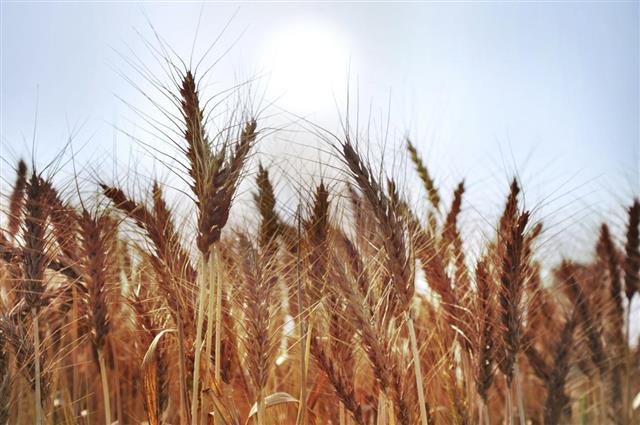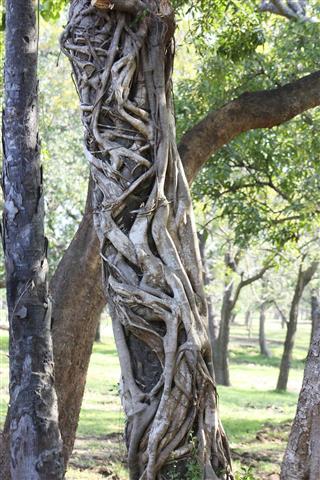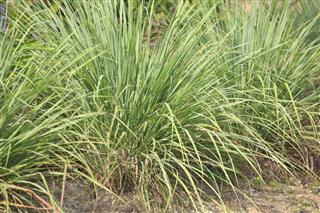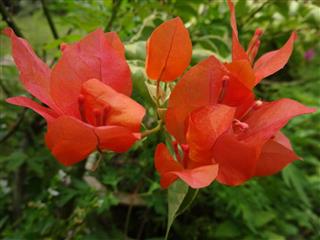
Plants can be classified according to their characteristics, locations or uses. Leaf through this article which presents interesting information on common plants and the types of plants in the rainforests, that make our world cool and green.
Can you imagine a world without plants? Plants not only provide us oxygen and food, but they also help us in a variety of ways to lead a comfortable and disease free life. Lush green color of the grass and trees is soothing to eyes. As you know, wood was the original source of fire. Even today, wood is used to cook food, make toys and furniture, build platforms and ships, construct bridges and houses, etc. Various parts of the trees are used for therapeutic purposes and for making perfumes, food products, decorative articles, etc. Oil is extracted from a number of seeds, flowers and other parts of the plants. Medicinal uses of roots, fruits, flowers, leaves, barks, make plants an invariable part of our life. Animals eat grass and human beings eat vegetables. Fruit is the favorite food of both human beings and animals. Different kinds of plants grow in different parts of the world. It is impossible to enlist all the different types and varieties of plants here. Some important and common types are described below.
Common Types of Plants
Trees: Short plants are called shrubs and tall plants are known as trees. Innumerable types of evergreen trees help make our earth green. Deciduous trees are the trees which shed their leaves. Ornamental trees that are used for landscaping include maple trees, oak trees, flowering pear, etc. Here are some types of flowering (Angiosperms) and non flowering trees (Gymnosperms).
| Angiosperms | Gymnosperms |
| Plum | Cypress |
| Dogwood | Cedar |
| Cherry | Spruce |
| Apple | Sequoia |
| Maple | Cycas |
| Bottlebrush | Yew |
| Buckeye | Juniperus |
| Hawthorne | Zamia |
| Almond | Podocarpus |
| Yellowwood | Sciadopitys |
Vegetables and Fruit Bearing Plants: Vegetable gardens yield vegetables and fruits bearing trees provide fruits. Including lots of vegetables and fruits in your diet helps improve your health; as they provide the essential nutrients.
Grass: Grass is the main food of herbivorous animals, like cow, sheep, deer, etc. Human beings usually eat herbivorous animals. Some types of grass exhibit medicinal properties too. For example wheat grass, psyllium, etc. Ornamental grass types are also very popular.
Shrubs and Bushes: Various types of shrubs and bushes enhance the beauty of home gardens or public places. Many shrubs are covered with flowers. They are the most common hedge plants as they have high ornamental value. The following table describes common shrubs and bushes.
| Flowering | Non Flowering |
| Hydrangea | Golden Duranta |
| Azalea | Coleus |
| Boxwood | Arborvitae |
| Bougainvillea | Bamboo Palm |
| Honeysuckle | False cypress |
| Firethorn | Artemesia |
| Holly | Euonymus |
| American Bittersweet | Hebe |
| Barberry | Aucuba |
| Lonicera | Houttuynia |
Flowering and non Flowering Plants: Flowering plants are the most sought after plants. They enhance the beauty of gardens, homes, offices, streets, etc. Flowering plants are used as office plants for decoration, for producing medications or perfumes, for aroma therapy, etc. Non flowering plants like crotons are known for their brightly colored foliage and they are widely cultivated as decorative plants.
Cacti: A cactus is a plant which stores water in its succulent stem. Cacti are well adapted to grow in a hot and dry weather. They are commonly found in deserts; but are also used to enhance the beauty of specially designed gardens. They are used as houseplants too.
Herbs: Culinary, medicinal and spiritual uses of herbs are common these days. Herbs like aloe vera, basil, etc., are used for various purposes. Herbs and herbal teas are well-known for medicinal effects. Following table enlists some popular herbs as per their growing habits.
| Annual | Biennial | Perennial |
| Aloe Vera | Parsley | Sage |
| Basil | Caraway | Spearmint |
| Chamomile | Coriander | Thyme |
| Calendula | Dill | Borage |
| Cayenne | Mustard | Gingerroot |
Other Types: ‘Crops’ that provide food like grains, legumes, cereals, etc., ‘annuals’ that live for one year, ‘biennials’ which last for two years or which take two years to bloom or to grow from seed to fruition, ‘perennials’ that last longer and keep on flowering, etc. are some other kinds of plants. Creepers (allamanda, bougainvilleas), climbers (grape ivy, bleeding heart), bulbs (daffodils, tulips), plants with tubers and tuberous roots (potato, dahlia), summer-flowering plants (gladiolus and lily), spring-flowering plants (hyacinth, daffodil, tulip), etc. are some other divisions of plants. The list of plant types is actually never-ending. If you are interested in knowing some uncommon types of plants that are found mostly in the rainforests, then take a look at the following section.
Different Types of Plants in the Rainforest
The rainforest biomes of the world are the biggest oxygen suppliers of the world. Tropical and temperate rainforests have billions of plant species, some of which are now labeled as ‘endangered species’. The main types of plants in the rainforest are:
Carnivorous Plants: These plants obtain nutrients from animal matter. Nepenthes rafflesiana, venus fly trap and the pitcher plant are some examples of carnivorous plants.
Lianas: Climbing vines in the rainforests are called lianas. Sunlight hardly reaches the ground level of the dense rainforests. Lianas climb upwards as they need sunlight for survival. Their stems become thick and woody. The length of the stems can be 3000 feet!
Strangler Plants: Seeds of strangler plants start growing high on other trees. They have air roots and they get moisture and nutrients from the air. Orchids, philodendrons, ferns and bromeliads are the best examples of strangler plants. Their aerial roots grow quickly and start surrounding the host tree. Eventually, due to suffocation, the host tree dies. That is why these plants are called ‘killer plants’. Birds and monkeys eat the fruits of these plants and transport the seeds of these plants.
Plants with Prop Roots: Plants like mangroves which grow at river edges have greater risk of floods and tides. Several aerial extensions from the trunk grow downwards and support these plants. These prop or stilt roots provide the required stability to these plants.
Plants with Buttress Roots: Soil in the rainforests contains maximum nutrients at the surface level. To have maximum possible nutrients and support, some tall trees develop buttressed roots. These roots grow from the base of the trunks and try to cover maximum area. Roots growing from the base of the trunk, from the level as high as 15 ft above the ground, are very common.
Medicinal Plants or Plants of Industrial Use: Rainforest plants are the biggest source of drugs like quinine. A number of muscle relaxants, steroids and cancer drugs are obtained from the plants in the rainforests. Every part of a trumpet tree or Cecropia peltata is used to make some kind of a medicine. Around 150 types of chemicals are found in the leaves, seeds, fruit, and bark of cocoa tree or Theobroma cacao which are used to produce drugs to treat anxiety, fever, fatigue, cough, etc. Insect repellents, paints, appetizers, juices, extracts, poisons, tonics, energy drinks, and various industrial products are manufactured by using various parts of trees.
Plants help avoid soil erosion and provide pure oxygen that we breathe. Human as well as animal life is dependent on different types of plants. Still, numerous plants are at the verge of extinction. Studies show that thousands of species are in danger of extinction in the next 10-50 years. Strict action is required to preserve the natural wealth of our planet. More and more forests are being destroyed for land clearing for urban development, agriculture, animal grazing, etc. Adverse effects like ‘global warming’ are signs of environmental imbalance. Drugs for so many diseases like cancer, diabetes, AIDS, Alzheimer’s disease, arthritis, etc. are yet to be discovered. Deforestation and extinction of thousands of species can hinder the discovery of many possible cures for life-threatening diseases.































